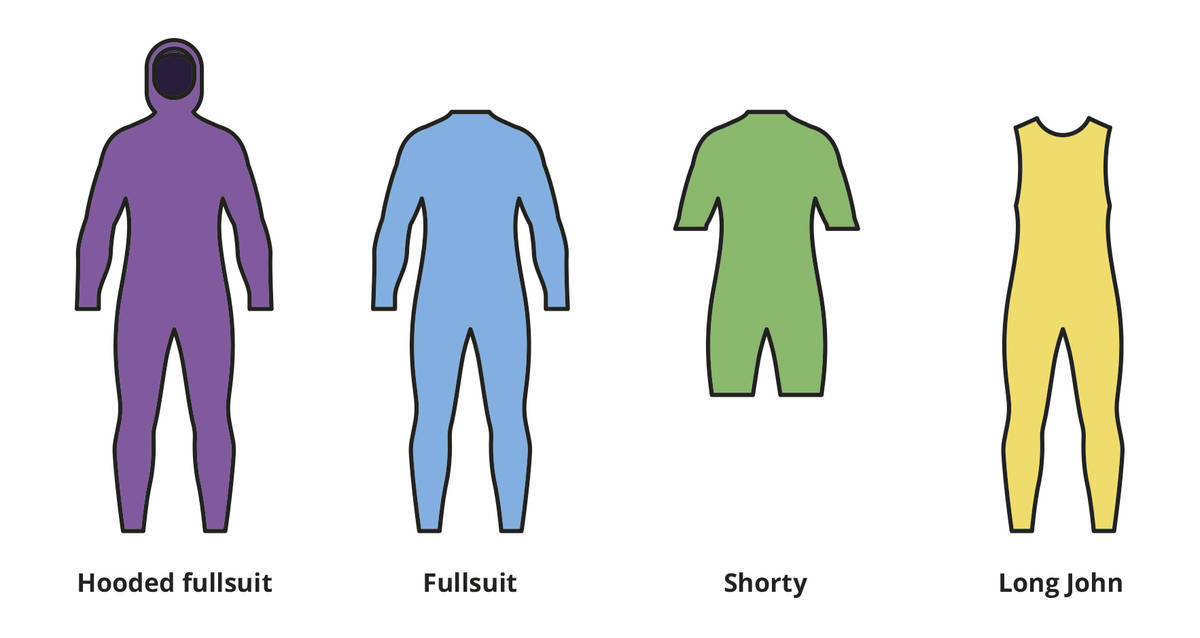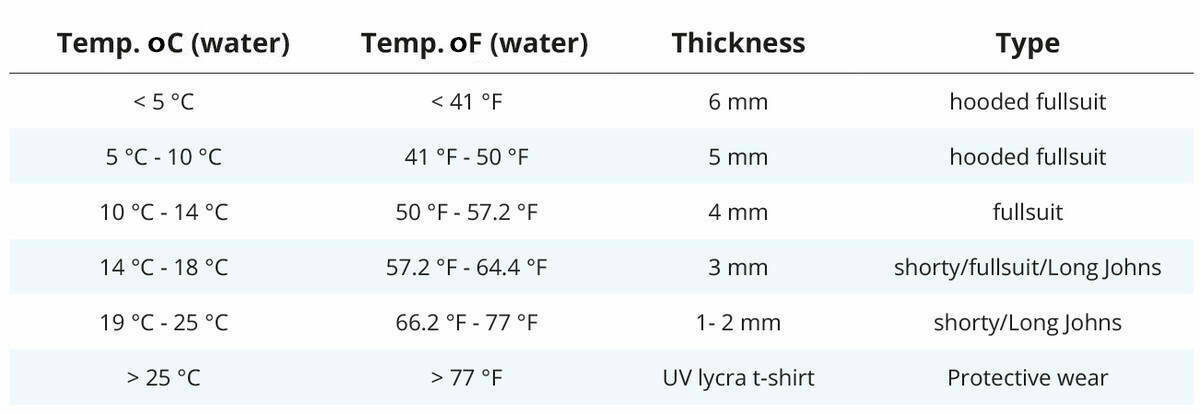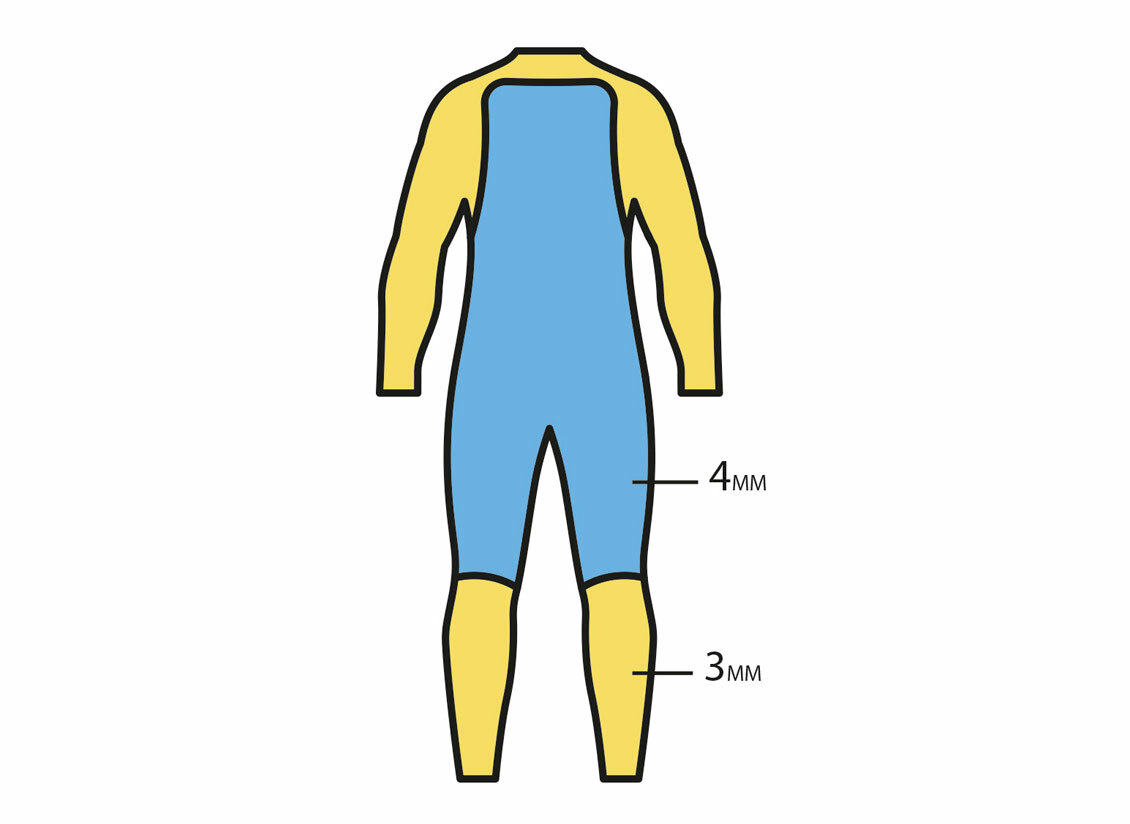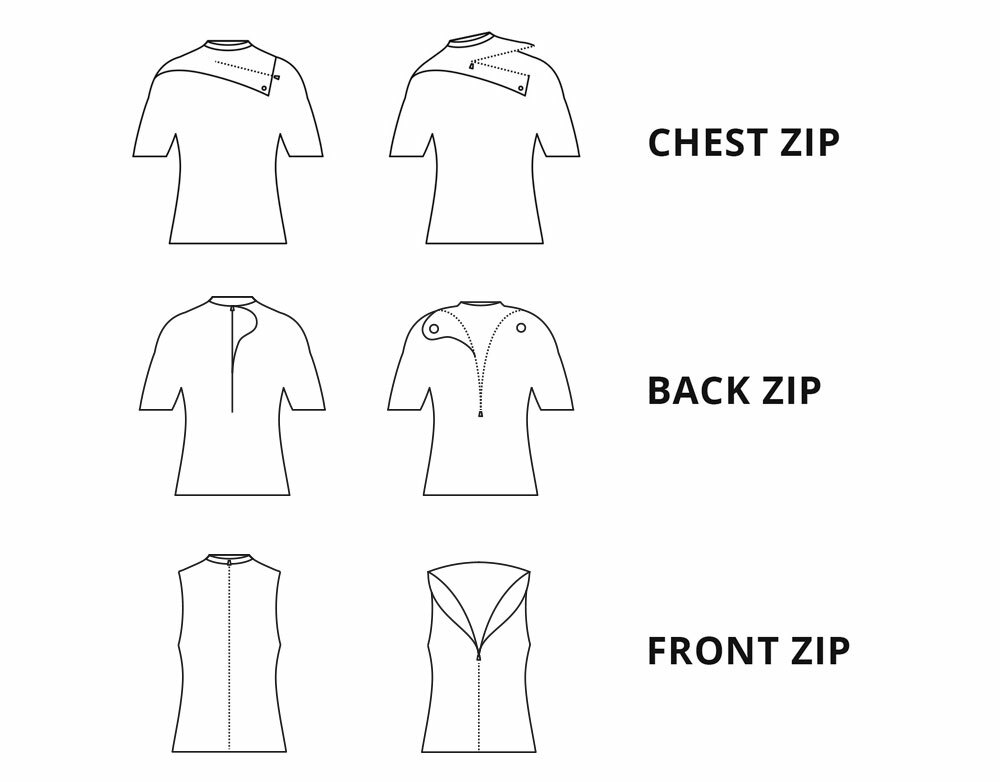Purchasing a Wetsuit
When you are acquiring either your first wetsuit or an additional one, there are several important considerations to bear in mind, such as:
- what purpose and location it will be used for
- thickness
- design
Wetsuits are made of neoprene and are designed for water sports like surfing, wakeboarding, and kitesurfing, as well as leisurely pursuits such as tubing. They keep you warm and comfy in the water. Kid’s wetsuits are frequently utilised as effective protective layers against sun exposure and cold water.
Many assume wetsuits keep you dry, but they actually trap a thin layer of water warmed by your body.
1. Wetsuit Types and Thickness: Temperature as Key Consideration
Before delving into technical specifics, consider your preferred water sport. Typically, there are four primary wetsuit categories: hooded fullsuit, fullsuit, shorty (also called a spring suit), and Long Johns. Variations exist, such as full suits with short sleeves or shorties with long sleeves.

The foremost role of your wetsuit is warmth, thus the choice relies heavily on the temperature of the water/air. The chill factor also matters.
For example, wind sports like surfing, kite surfing, and windsurfing require thicker, warmer wetsuits, yet they must be flexible and robust, so investing in a high-quality wetsuit is imperative. Wave skimboarding shares similar needs. Essentially, it's wise to buy a full suit initially and consider a short-sleeve/long-sleeve shorty as a secondary purchase.
Conversely, inland surfing typically involves warmer, calmer waters, necessitating less substantial suits (e.g., wakeboarding, flatland skimboarding, waterskiing). Here, a shorty (either long or short-sleeved) is a good first purchase, while a fullsuit would be ideal for colder seasons.
For SUP and kayaking, a Long John matched with a windproof layer (if required) is customary due to the continuous movement of arms and shoulders, which can be hindered by a thick fullsuit.
We've created a table to assist you in selecting the appropriate wetsuit thickness and type depending on the waters you'll be engaged in. Therefore, researching your location beforehand is vital.
Remember, the chart provides guidance, but wetsuit choices also depend on individual needs and preferences. Ultimately, warmth and comfort are paramount!

2. Understanding Thickness Measurements
Temperature suitability varies with activity level, external temperature, and body weight, so consider these factors. The UV Lycra mentioned for warmest conditions refers to a special sun-protective t-shirt.
The neoprene thickness is not always a single figure. What do multiple numbers, separated by slashes, signify?
The initial number shows the neoprene thickness in the torso/hip area, and the subsequent number indicates thickness on arms and legs. With three numbers: the first is torso thickness, the second is for legs, and the third for arms. For instance, 4/3 mm indicates 4 millimetres on the torso and 3 millimetres on arms and legs. A 4/3/2 mm wetsuit possesses 4 mm at the torso, 3 mm at legs, and 2 mm for arms—ensuring core warmth with freedom for limbs.

3. Size and Design... Yes, They Matter... A Lot
Size
Getting the correct wetsuit size is crucial as having a snug fit (without discomfort) ensures better insulation. A well-fitted wetsuit should feel like a second skin, maintaining a fine water layer between you and the suit—without impeding blood flow. To check fit before water use, raise your arms above your head and stretch. It should slightly resist movement but not restrict it. Perform some squats and mimic paddling—if possible, then the fit is likely right.
The neck area of the wetsuit should feel tight (but not induce choking) to prevent water entry.
Wetsuits come in standard sizes: XS, S, M, L, XL, XXL, or their UK equivalents—4, 5, 8, 10, 12, 14. However, note ‘S’ or ‘T’ after the size indicates short or tall versions of the standard size. For instance, ST denotes small/tall size.
Design (Zips and Seaming)

In terms of design, we previously discussed the importance of limiting water entry at neck areas. Zip types and seaming are crucial design elements impacting water ingress/egress. Less is better.
Chest zips minimise water entry, making these designs warmer and relatively modern;
Back zips offer easier access for both wearer and water, thus can feel cooler. This older design permits easier donning and is more affordable;
Front zip provides easy access for both you and water, rendering them cooler than alternatives.
The seaming also plays a significant role in heat retention and water exclusion.
Flatlock stitching involves panels being sewn on both inner and outer wetsuit surfaces;
Sealed refers to blind stitched panels, glued to prevent water entry, necessary for colder conditions;
Sealed and taped indicates post-stitching and gluing, a tape is applied over the glue internally to trap warm air.
4. Attributes of a Quality Wetsuit
Like other products, neoprene varies in quality. High-quality neoprene contains ample air, providing better insulation and warmth. It should also be durable and stretchable.
A quality wetsuit minimizes water permeability, ensures fit and insulation, and is both elastic and long-lasting. Typically, more stretch reduces durability. Yet, a premium wetsuit balances both. Top-tier wetsuits are usually 1 mm thinner, robust, more elastic, more comfortable, and maintain the same insulation as thicker versions due to high-grade neoprene.
Prepared for the Water?
To conclude:
- First, consider your sport and venue
- Next, factor in the water temperature
- Select the correct size
- Opt for an appropriate design
And lastly - enjoy yourself!
